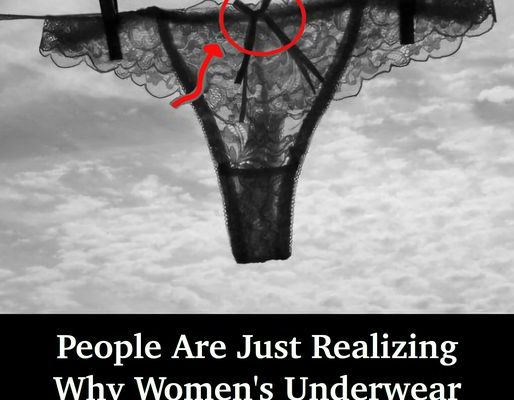Underwear, a seemingly mundane part of our daily attire, has captured the curiosity of many. While most of us may not spend much time pondering the intricacies of undergarments, an interesting element has caught the attention of individuals worldwide — the little bow that often adorns the front of women’s underwear. In this article, we delve into the origins and significance of this decorative bow, unearthing the fascinating history that ties it to a bygone era.
A Bow on Underwear

One of the most intriguing aspects of the decorative bow is its connection to the past, specifically a time before the invention of elastic fabric. Research reveals that this bow isn’t just a whimsical accessory; it has a functional history dating back centuries.
A Throwback to Pre-Elastic Days

Without elastic, drawstring ribbons secured with a bow at the front were employed to prevent underwear from slipping down.1 These ribbons were threaded through eyelet lace at the tops of undergarments, effectively keeping them in place. This practical solution speaks to an era when undergarments required creative means of support.
Beyond its functional roots, the decorative bow holds deeper symbolism

In contemporary times, a bow on underwear is often associated with cuteness, femininity, and a touch of innocence. Reddit discussions on the topic highlight the appeal of the bow’s aesthetics, with users describing it as “cute” and “feminine.” Additionally, the bow’s placement on the front serves a practical purpose too — it provides an easy marker for identifying the front of the garment, especially during hasty dressing scenarios, such as in the dark. This blend of aesthetics and functionality contributes to the enduring allure of having the bow on underwear.
Tracing Back Through Time: Evolution of Women’s Undergarments

To fully appreciate the bow’s significance, it’s essential to consider the evolution of women’s undergarments over the centuries. While evidence from the past is often scarce due to the delicate nature of underpants, historical records, and preserved artifacts offer glimpses into the past. In eras before the 15th century, our knowledge of women’s undergarments primarily came from artwork, writings, and textiles. Women’s attire included petticoats, chemises, and sometimes corsets during this time.
The 1800’s Led a Beautiful Revolution

The 1800s marked a period of transformation, as initially plain drawers evolved into more decorative pieces adorned with lace and bands. This period also saw the emergence of pantalettes, which retained the concept of drawstring bows even as elastic gained popularity.2
Trends Ever Evolving

As fashion trends evolved, the drawstring bow transitioned from a practical necessity to a fashion statement. The persistence of a bow on underwear speaks to its lasting charm and appeal. While its original purpose of preventing undergarments from slipping is no longer a primary concern, the bow’s decorative aspect continues to captivate wearers and designers alike. It’s plausible that the tradition of the bow endured due to its decorative flair, providing a touch of elegance and charm to women’s undergarments.
The Bow on Underwear: An Emblem of Femininity

The decorative bow on the underwear is a testament to the seamless blend of functionality and fashion. Its origins in pre-elastic times evoke a sense of nostalgia for an era when innovative solutions were needed to keep undergarments in place. Simultaneously, the bow’s placement and aesthetics add a touch of charm and femininity to women’s underpants.
An Aesthetic Ever Loved

While the historical evidence might not be exhaustive, the enduring presence of the bow speaks volumes about its significance and appeal. So, th



